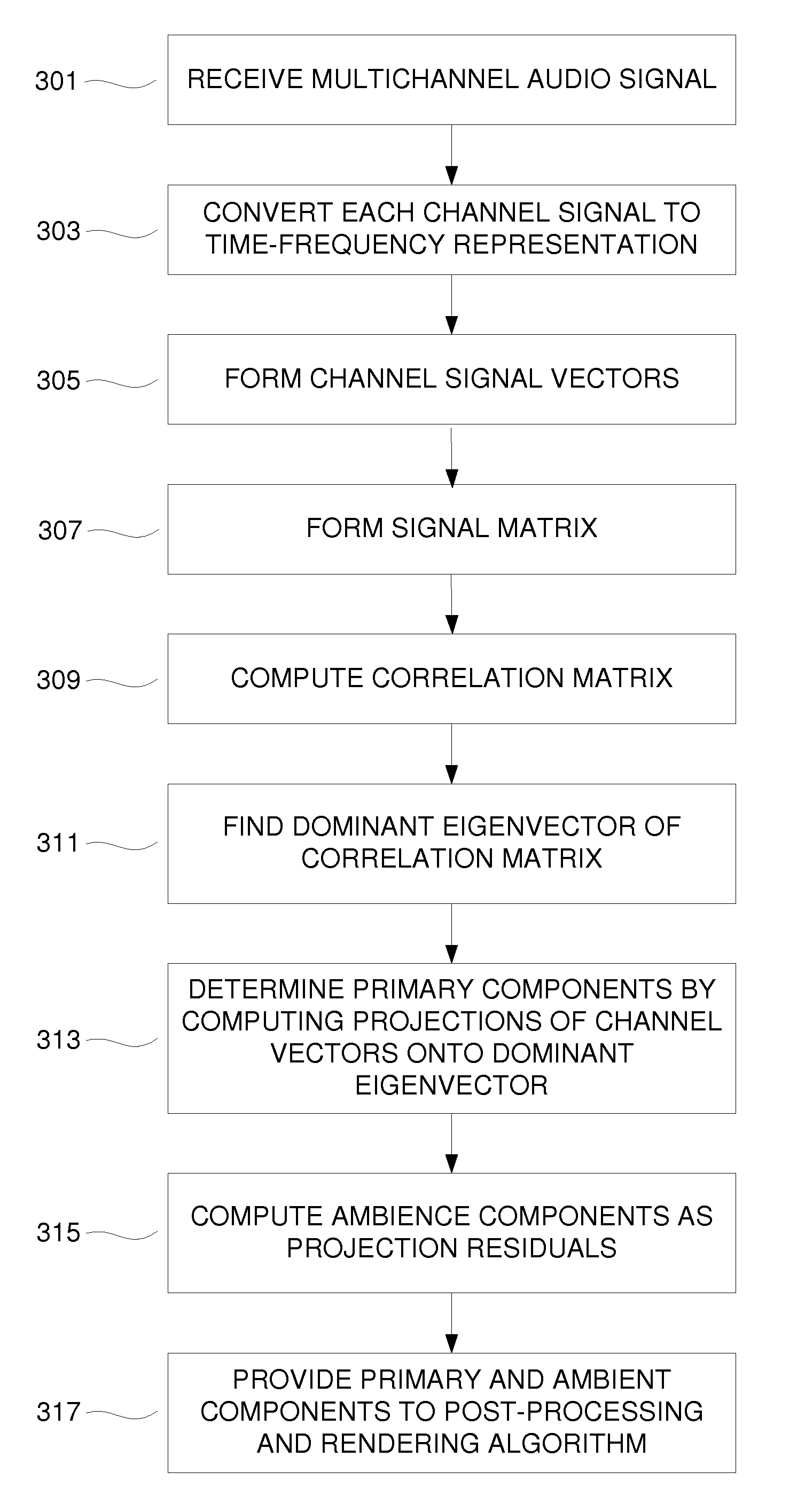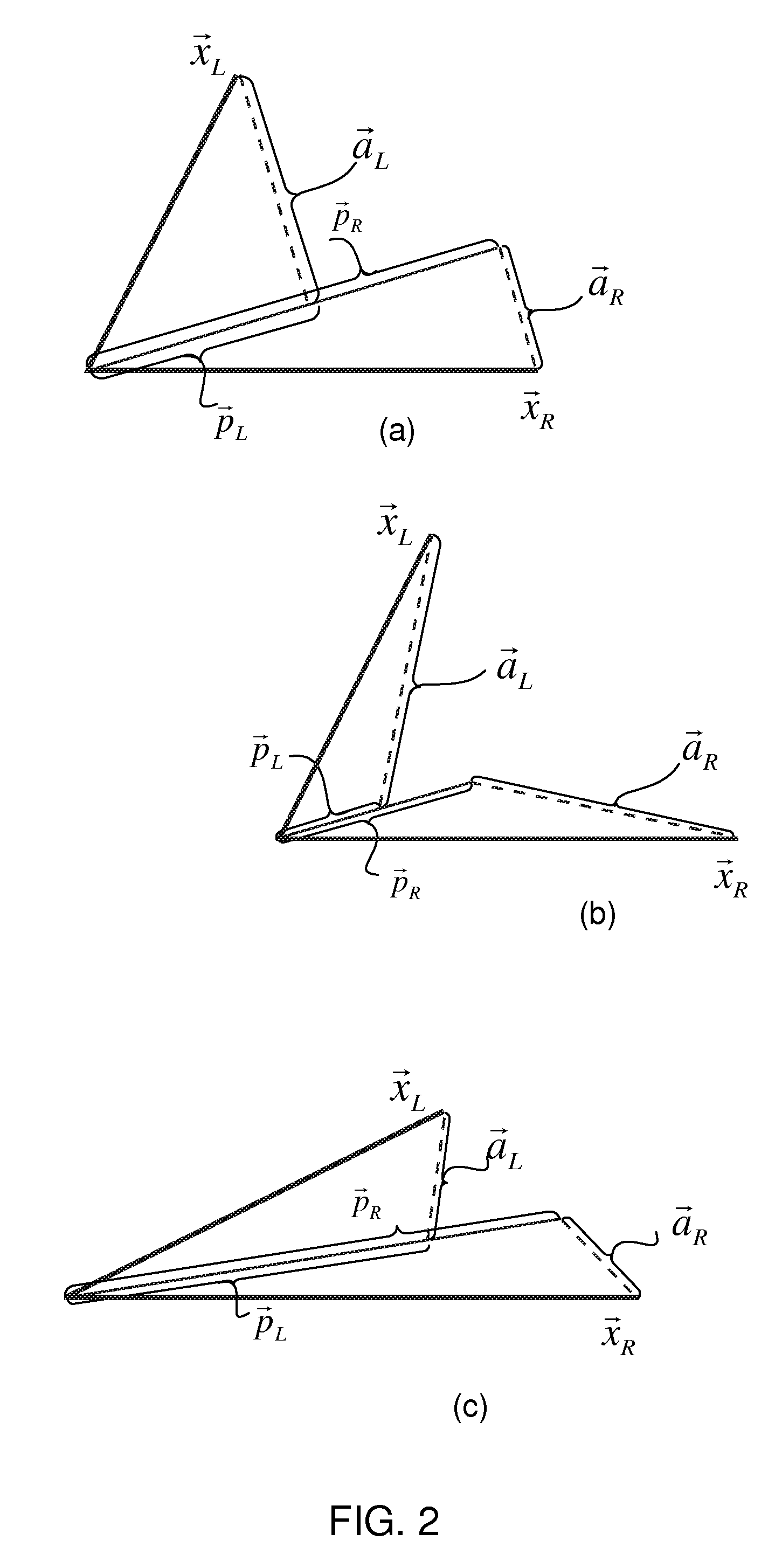Adaptive Primary-Ambient Decomposition of Audio Signals
a primary-ambient decomposition and audio signal technology, applied in the field of audio signal processing techniques, can solve problems such as artifacts in audio reproduction, and achieve the effect of enhancing decomposition
- Summary
- Abstract
- Description
- Claims
- Application Information
AI Technical Summary
Benefits of technology
Problems solved by technology
Method used
Image
Examples
first embodiment
[0027]the present invention, i.e., the modified PCA primary-ambient decomposition, provides a decomposition that is better adapted to the input signal characteristics than those described by previous methods. This approach yields an improved decomposition than PCA for uncorrelated or weakly correlated input signals by using a correlation-based crossfade as described below.
second embodiment
[0028]the present invention, i.e., the “orthogonal ambience basis expansion” method, derives an orthogonal basis adaptively from the input signals such that the ambience components across channels are always orthogonal. This basis is used in conjunction with the primary unit vector derived by PCA to derive the primary-ambient decomposition for each channel signal. This approach retains the performance of the PCA method for highly correlated signals while improving the performance for weakly correlated signals.
[0029]The embodiments of the present invention provide improved performance, e.g. less leakage of primary components into the estimated ambience than in prior methods. Although not required, preferred embodiments include frequency-domain / subband implementations. In preferred embodiments, decompositions are computed using autocorrelation and cross-correlation / inner-product computations.
Mathematical Foundations
[0030]The following equations define the relationships between the par...
PUM
 Login to View More
Login to View More Abstract
Description
Claims
Application Information
 Login to View More
Login to View More - R&D
- Intellectual Property
- Life Sciences
- Materials
- Tech Scout
- Unparalleled Data Quality
- Higher Quality Content
- 60% Fewer Hallucinations
Browse by: Latest US Patents, China's latest patents, Technical Efficacy Thesaurus, Application Domain, Technology Topic, Popular Technical Reports.
© 2025 PatSnap. All rights reserved.Legal|Privacy policy|Modern Slavery Act Transparency Statement|Sitemap|About US| Contact US: help@patsnap.com



